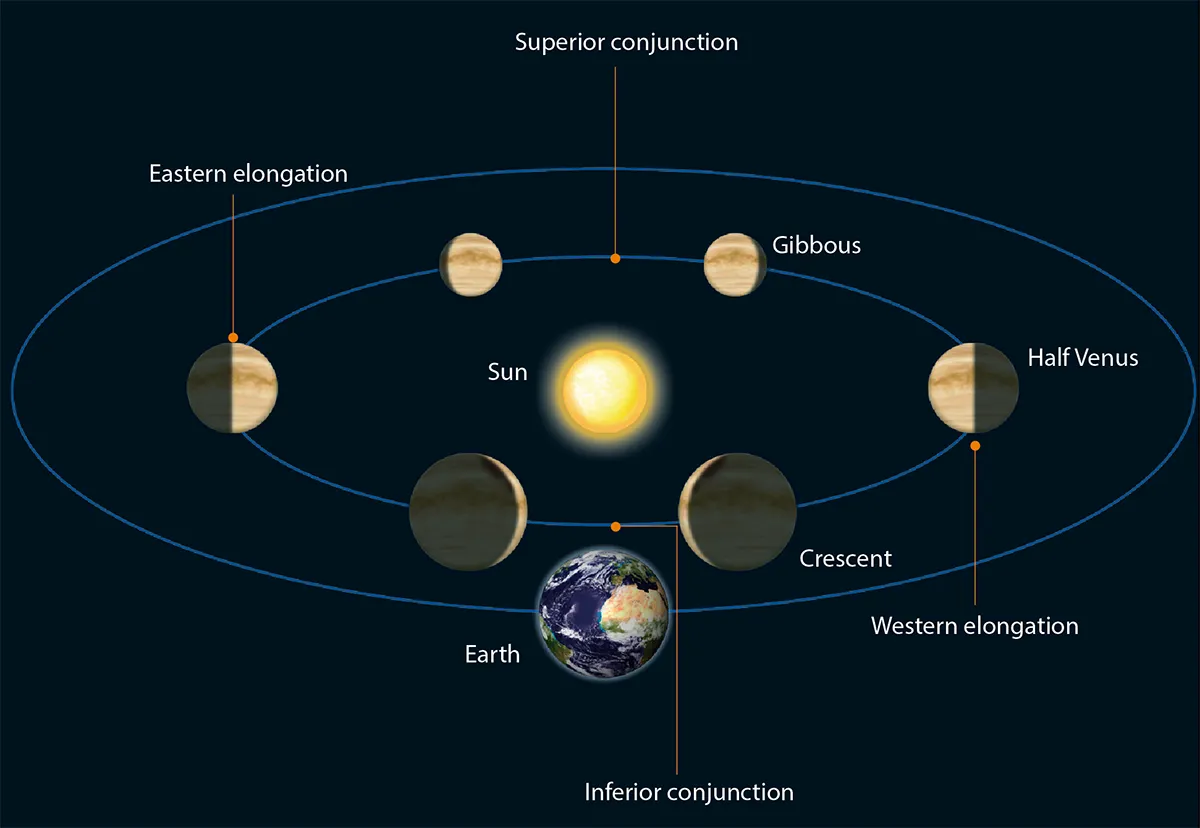Venus has been dominant in the UK’s evening sky for months, but during July its position after sunset rapidly deteriorates.
Although a shame for naked-eye views, it’s through the telescope that things are really starting to get interesting – the caveat is, you’ll need to find Venus during the day.
Get regular stargazing advice by signing up to receive the BBC Sky at Night Magazine e-newsletter and listening to our regular Star Diary podcast.

In a dark sky, Venus’s brightness works against it through a telescope.
Its intense glare is jostled by the unsteady seeing you get at low altitude after sunset (or before sunrise when it’s in the morning sky).
During the day, it gets higher and can be seen under steadier conditions. A blue sky also reduces contrast.
Together these factors make observing Venus in daytime skies a better prospect all-round.
Locating Venus by day can be done by eye but does take a bit of practice.
It’s essential that you are aware of solar safety at all times to protect your eyesight and equipment.
Standing in the shadow of a building or other structure is a good way to block any unwanted view of the Sun.
Using a Go-To-enabled mount pre-aligned the night before will allow you to go to Venus with computer assistance.
Alternatively, setting circles can be very helpful for locating Venus during the day.

Venus in July 2023: key dates
On 1 July, Venus sets nearly two hours after sunset. This offset decreases all month, and on 31 July Venus sets at the same time as the Sun.
On 1 July, the planet appears separated from the Sun by 41.8°.
Through the eyepiece it appears as a 31%-lit crescent 33 arcseconds across – a very beautiful sight.
On 10 July, the separation from the Sun is 37.5°, the planet setting 80 minutes after the Sun and appearing 23%-lit and 39 arcseconds across.

By 20 July, things will have changed dramatically. Its separation from the Sun drops to 30.5° and it sets 45 minutes after sunset.
An 8%-lit crescent Moon sits 7.1° above Venus as seen from the UK. Through an eyepiece, the planet appears 14%-lit and 46 arcminutes across.
After 20 July, daytime viewing is recommended.
On 31 July at 14:26 BST (13:26 UT), Venus appears due south at an altitude of 44° (half-way up the sky).
Separated from the Sun by 20.3°, through a telescope it will appear as a stunning 5%-lit crescent, 53 arcseconds across.
This guide originally appeared in the July 2023 issue of BBC Sky at Night Magazine.
